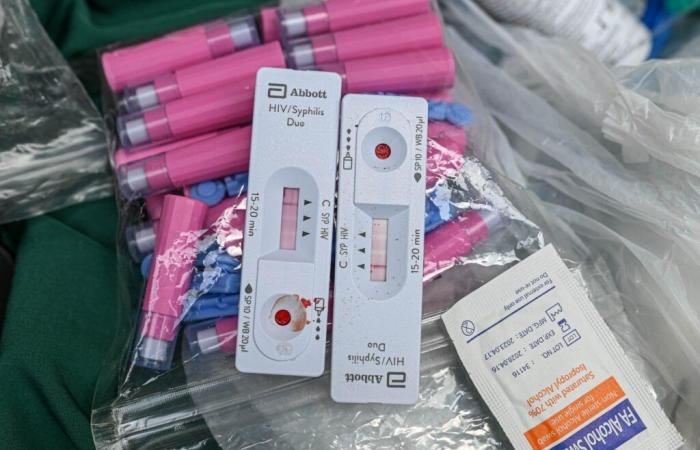© UNICEF/UNI610658/Adesegun
Posted on November 29, 2024
On World AIDS Day, UNICEF warns that despite breakthroughs in the response to HIV, adolescents, particularly girls, remain disproportionately affected.
Although there has been a significant decline in new HIV infections among children and adolescents globally over the past decade, adolescents still struggle to access prevention services and appropriate support , according to the latest available estimates.
Without urgent action to address the disproportionate impact of HIV on adolescents and young women – particularly in sub-Saharan Africa – hard-won progress in the fight against HIV could be jeopardized, warns UNICEF ahead of World AIDS Day, 1is December.
« Many countries have made remarkable progress in ending AIDS », said Anurita Bains, UNICEF Deputy Director for HIV/AIDS. « Yet children and adolescents are not fully benefiting from expanded access to treatment and prevention services. Children living with HIV must be prioritized when investing resources and efforts to improve treatment for all, notably by developing innovative screening technologies. »
According to the latest available data (2023):
- Globally, 96,000 girls and 41,000 boys aged 15 to 19 were newly infected with HIV in 2023, which means that 7 out of 10 new adolescent infections are among girls. In sub-Saharan Africa, 9 out of 10 new HIV infections among 15-19 year olds concern girls.
- In 2023, 330 children aged 0 to 14 contracted HIV every day.
- In 2023, 250,000 new cases of HIV infection were recorded in the 0-19 age group, bringing to 2.4 million the total number of children and adolescents living with HIV worldwide.
- While 77% of adults living with HIV have access to antiretroviral therapyonly 57% of children aged 0 to 14 and 65% of adolescents aged 15 to 19 have access to it.
- Last year, more than 90,000 children and adolescents have died from HIV-related causes, or 250 lives lost every day, including 73% in children under 10 years old.
- Children aged 0 to 14 represent only 3% of people living with HIV, but they will be the cause of 12% (76,000) of virus-related deaths in 2023.
- The rate of new HIV infections in East and South Africa has decreased by 72% among 0-14 year olds and 57% among 15-19 year olds since 2010which makes it one of the greatest global public health success stories in decades.
- Despite a reduction in global infection rates in most parts of the world since 2010, 74,000 new HIV cases among children and adolescents aged 15 to 19 recorded in East and Southern Africa in 202318,000 in West and Central Africa, 8,900 in South Asia, 5,800 in Eastern Europe and Central Asia, and 16,000 in East Asia and the Pacific.
- Latin America and the Caribbean have not experienced a significant reduction in the rate of HIV infection among adolescents for at least ten years, while in the Middle East and North Africa, new infections among adolescents have increased by 70% since 2010.
- 19 countries and territories have obtained certification of the elimination of mother-to-child transmission of HIV and/or syphilis, including 11 in the Americas, with recent certifications for Belize, Jamaica and Saint Vincent and the Grenadines. In Africa, Botswana and Namibia are certified as being on the path to elimination.
Download multimedia content ICI.
View the message from the Executive Director of UNICEF,
on the occasion of World AIDS Day ICI.
Notes to editors:
Data on HIV infection among adolescents are taken from the UNAIDS 2024 Estimates. Figures may not add up due to rounding.
Other World AIDS Day resources are available ICI.






